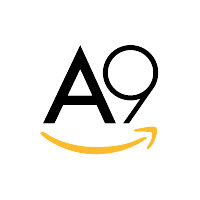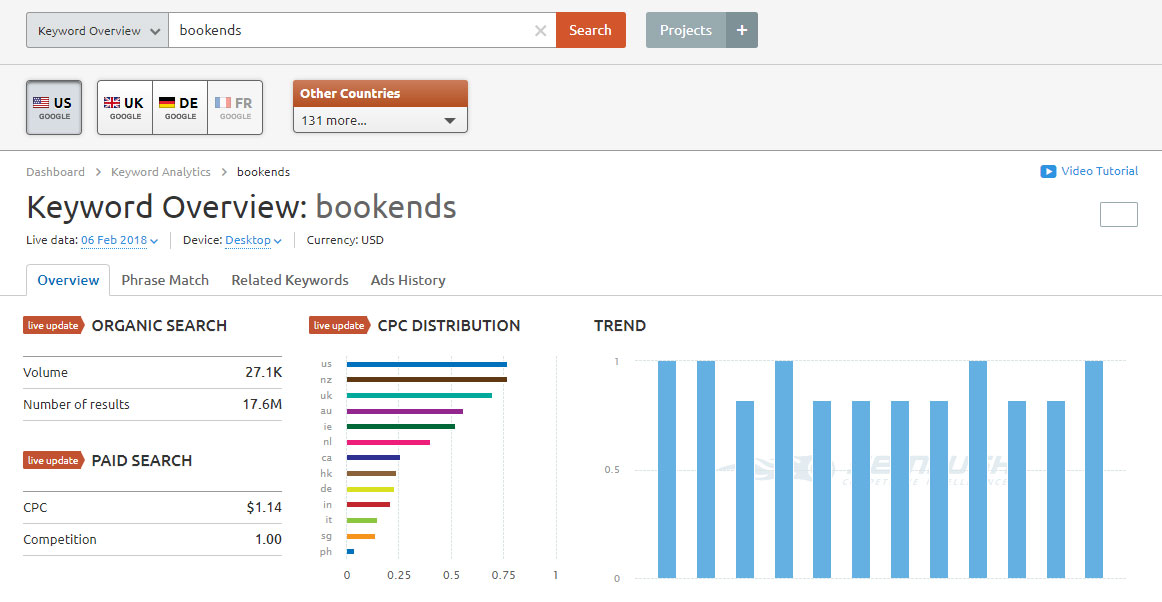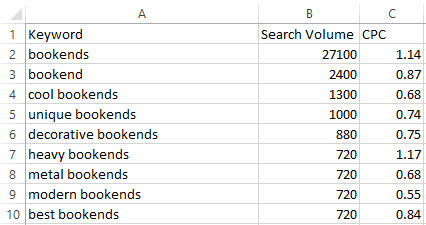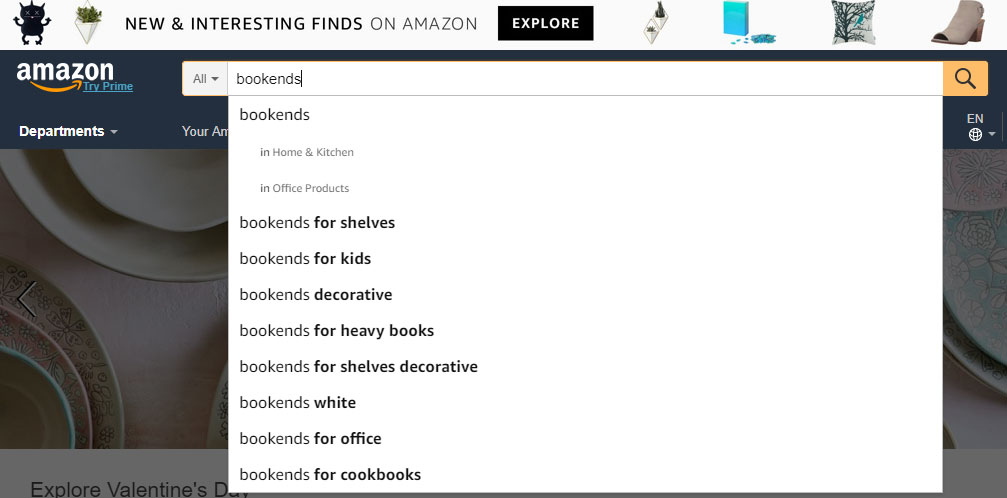The most important aspect of increasing traffic to your Amazon listings is properly implemented Keyword Research. There are lots of ways to drive targeted traffic to your listings including off-site promotions and internal sponsored product campaigns, but the best way to garner a #1 Best Seller is to leverage organic traffic based on relevant researched keywords strategically placed in your listing.
An Introduction to Amazon SEO Strategy
Many people ask the question what is Amazon SEO, perhaps not understanding that there's more to SEO than simply Google. Ranking highly within Amazon searches is vital to many e-commerce businesses and there are many varying techniques that go into a well-worked and successful strategy.
There are a few key principles you will need to implement to execute an effective Amazon SEO strategy. Knowing what makes a good SEO strategy is crucial and that starts with keyword research. You have to know what Amazon customers are searching for and use relevant terms in your product listing in order to get in front of them. The key here is relevant. It doesn’t matter how high the search volume is if a customer clicks away prior to making a purchase. Once you have relevant keyword terms, your goal is to strategically place them in the product title, features, description and the search terms in the back end.
The Cycle of Optimizing, Analyzing and Repeating
Note: just because you have optimized your listings once doesn’t mean the work is finished. Optimization is an ongoing process and will require going through the cycle of optimizing, analyzing and repeating.To be successful, you will need to pay attention to what keywords are successful in converting sales and enhance those in the listing. You can always add more keywords to the listing, or edit the listing to be more relevant for specific keywords.
Often, there are search terms that you think will be relevant but fail to convert customers. In these cases, you may want to update the listing to reflect that feature or benefit more clearly. In other situations, you may find that unexpected keywords tend to convert highly and you may choose to focus on these new converting keywords instead. Either way, the goal is to figure out what works and continue to push your listing in the right direction.
"Optimizing for customer conversion first, while including important keywords will help with the A9. Brands should recognize that Amazon product listings show up in the top paid and organic spots on Google search (sometimes above the Brand's own site) so how you optimize your titles and bullets plays a key role in what off-Amazon customers see."
— Joseph Hansen, CEO of Buy Box Experts
Understanding Amazon’s A9 Search Algorithm
A9 is Amazon’s proprietary search algorithm software implemented to help Amazon customers find the best products, at the best price to allow them to make more purchases, thereby increasing Amazons revenue. The most important thing to remember about A9 is that Amazon rewards listings that convert, not listings that have the densest keyword use.

A9 | Amazon's Search Algorithm
There are several things that determine a products’ rank in the algorithm, including the quality and quantity of the product reviews, fulfillment method, and price, but ultimately everything comes down to the conversion. The more a product converts for a specific keyword, the higher it will rank on Amazon for that search term. Amazon often rewards products with an Amazon Choice badge for a specific search term, even if it is not a best seller in the parent category.
Amazon Search Engine Optimization Keyword Research
As stated in the strategy, the most important aspect of Amazon SEO starts with doing proper search engine optimization keyword research. Below I have listed a handful of the most popular resources, ranging from free to paid, that will allow sellers to look at what the potential search volume is for any given term. Since no tool is going to be absolutely accurate, it is still helpful to look at which search terms are higher relative to other terms, and base your decisions on that. Search volumes between different tools can also vary greatly especially if they are targeted towards different platforms, i.e., Google, Amazon, etc.
SEO Keyword Research using SEMrush
To get started doing search engine optimization keyword research for Amazon you will want to begin by writing down all of the keywords and search terms you can think of that a customer might use to find your product. From there, you will enter them into SEMrush in the keyword overview search bar. This will provide a list of related terms that you can easily download into a CSV file. Repeat the process until you have entered all of your initial search terms.

SEMrush Keyword Overview
Now begin to copy the most relevant search terms into a new spreadsheet including the keyword, search volume, and CPC (which can be helpful for determining ad budgets once you begin advertising). You may also find additional terms that you hadn’t considered and enter those variations or combinations of search terms to find additional search terms and their volumes. Once you have your list you will want to consider using some of the additional sources of keyword research mentioned below before finalizing your list and choosing the most appropriate terms to target in your listing.

Spreadsheet of Relevant Keyword Terms
Keyword Research Using Amazon Auto-Fill
One of the easiest ways to get additional suggestions is by going to Amazon.com (be sure to log out of your account first and clear your cache to avoid any suggestions based on previous search history) and entering your initial search terms into the search bar. Amazon will begin to auto-fill suggestions that you can use to determine what Amazon customers might be searching for and how they might be phrasing those searches.

Amazon Auto-Fill Example
Keyword Research Using Google Keyword Planner
If you have a Google AdWords account, you can also use the Google Keyword Planner which can provide suggestions based on initial search terms as well as estimated search volume for the terms on Google. Note that even though Amazon surpassed Google as the primary search engine for product shopping, Amazon listings still rank on Google and sellers can increase their product rankings by optimizing them for both Amazon A9 and Google search engines.

Google AdWords Keyword Planner
Keyword Research Using Scope
Scope is a new Amazon SEO research tool by Seller Labs that allows sellers to search for relevant search terms based on initial search phrases, as well as search terms for competitor listings. They include a free Google Chrome Extension to begin, but you will need to upgrade to the paid plan to get full access to the tool. One of the biggest benefits of using Scope is that you will get more accurate search volume for Amazon since the data pulls from search term impressions, which is likely to be higher than Google.

Scope Keyword Generator Results
Keyword Research using Amazon Automatic Campaigns
If you already have your products listed on Amazon and are running automated campaigns you can use the automatic campaign keyword report, which uses broad match, to gain additional potential search terms that your product already converts for. This can be done by going to Reports – Advertising Reports – Search Term Report and requesting a report that you can download for analysis.
Once you have all of your potential keyword terms, you can add them to your spreadsheet, sort by relevance and volume and work on creating a plan to implement them into your product listing.
Amazon Title Optimization
There are several places you can insert keywords, but none are as important as the product title. The title is essentially your first and most valuable search field. The goal here is to leverage SEO and avoid keyword stuffing while keeping in line with Amazon policy and best practices.
Amazon titles will vary in length but the goal is usually to be concise, and based on the category will be restricted to anywhere between 50 - 100 characters. Optimized titles will also include the brand name, product name, primary feature, and variation information (size, color, flavor, etc.) Note that it is always better to dominate for a few keywords than be lost in the shuffle for many. Typically the top 2-3 search terms will bring in a majority of the products organic sales, so focusing on the most relevant search terms here is essential.

Optimized Title Example with Primary Search Terms
You also want to make sure you abide by the Amazon Style Guide, an online guide that provides details on how a title should be formatted based on the category of the product. Typically a title will follow this general format/layout:
[Brand] + [Feature] + [Material] + [Key Ingredient] + [Product Type] + [Model Number] + [Size] + [package count] + [Color] + [Flavor]
You will want to include at least 1 or 2 search terms in the title, and occasionally they will overlap allowing you to fit them concisely in the allotted space while still following Amazon’s style guidelines.
Amazon Search Terms Optimization
This is absolutely an essential component of your Amazon optimization and should not be overlooked. Amazon currently allows for 250 characters in the Search Terms field to be indexed. Your goal is to use as close to that 250 characters (including spaces) as possible to increase the number of search terms that can be used to find your product.
To do this, you will want to use all of the related and tangential search terms from your research that were not used in the title to fill out the search terms. Don’t repeat keywords, use stemming (-ing, -ed, -es, etc.), commas or punctuation. I prefer to keep all of my search terms lowercase since it looks cleaner and allows me to easily spot terms that might have been used twice.
cool unique heavy cute creative shelf organize desk stand fancy
It is important to take your time to do this well since your potential search volume relies heavily on it. Your product is not likely to be found if it doesn’t contain a keyword and adding additional related terms will help expand your potential audience. Surprisingly, out of the 50+ professional Amazon sellers I have worked with, only one has ever done their search terms correctly. So, this is likely to give you a competitive edge over other listings if you take the time to do your Amazon search term optimization right.
Amazon Product Feature Optimization
In addition to your back-end Amazon search terms, you will also want to add your top 2 – 3 search terms to your product features. Again, you don’t need to keyword stuff, but consider adding one keyword term per product feature, at most, if applicable. A9 does index product features and including them here can not only increase potential ranking but also conversion rates if customers are able to confirm quickly that they have found the product they were looking for.
Easily organize all of your books using these decorative bookends.
Easily organize all of your books using these decorative bookends Easily organize all of your books using these decorative bookendsAmazon Product Description Optimization
The last place you can add your primary search terms is in the product description. Amazon currently has two product description options for sellers with the brand registry: regular product descriptions and Enhanced Brand Content. A9 currently does not index Enhanced Brand Content, so even if you use this feature as an overlay, you will still want to include an optimized regular product description for A9. However, Google does index the Enhanced Brand Content so you will want to include your primary keywords in that content as well.
Summary of Amazon Search Engine Optimization
In addition to utilizing the search terms in your product listing, you can also include all relevant search terms in your Amazon manual campaigns to drive additional traffic to your listings. Optimizing a listing the first time typically gets you 85% of the way there, but ongoing analysis and optimization are required to maintain momentum. Once your optimizations are made, you will want to immediately drive internal and external traffic to the listings to create conversions and begin allowing A9 to rank your product accordingly.
Innovative SEO services
SEO is a patience game; no secret there. We`ll work with you to develop a Search strategy focused on producing increased traffic rankings in as early as 3-months.
A proven Allinclusive. SEO services for measuring, executing, and optimizing for Search Engine success. We say what we do and do what we say.
Our company as Semrush Agency Partner has designed a search engine optimization service that is both ethical and result-driven. We use the latest tools, strategies, and trends to help you move up in the search engines for the right keywords to get noticed by the right audience.
Today, you can schedule a Discovery call with us about your company needs.
Source:





